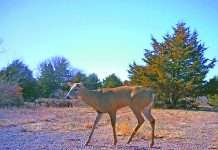Once the structural elements and hardscape features of your
outdoor living space are in place, it’s time to turn attention
to the details that really bring the area to life.
Vibrant textiles like cushions, pillows and rugs can all soften
the look of a space while adding colorful charm, but another
effective place where you can introduce plenty of character is the
landscaping.
Often, homeowners treat the landscape and the architectural
components of an outdoor living space as distinct design
elements. Making the landscape seamlessly integrate into the
area not only transforms the way the space looks, it enhances the
outdoor ambiance.
Create Climate Control
One of the first considerations is the functional benefits
landscaping can bring for needs such as shade. Quaking aspens
and birch trees are beautiful and fast-growing options, or for a
more traditional look, some maple trees grow quickly and certain
varieties create a dazzling display of color. Another popular
option is the Bradford pear, but this tree can be brittle and is
prone to splitting so choose it with care. Flowering trees such as
the tulip tree or dogwood are other fast-growing options. If a tree
is impractical for your space or simply not your style, you might
instead consider large flowering bushes, such as the lilac or Rose
of Sharon.
Keep Prying Eyes Out
When it comes to privacy, there is also a multitude of options.
Ornamental grasses come in a surprising array of colors and
looks, and many grow high enough to shield a private lounge or
eating area. Alternatively, you could consider a lush climbing
vine paired with a trellis. Dwarf trees and shrubs also lend
privacy when planted in close proximity. Another stylish
option is to put oversized planters into play. Fill them with the
vegetation of your choice for an instant eye block topped with
live plants. For an outdoor kitchen, make these vessels do doubleduty
by making them the basis for your herb garden.
Set Boundaries
If your outdoor space doesn’t have a clearly defined perimeter,
you can easily introduce borders using a line of shrubbery or
bushes. Low-growing options can help maintain an open feel
while adding some definition to the area. Creating specific
boundaries not only lends an aesthetic touch, it can help guide
traffic patterns; for example, encouraging visitors to keep to a
stone path.
Go Low Maintenance
If you’re leery of adding too much work with plants that need
frequent care and attention, there are several options that require
little effort. Succulents are a great way to add texture, interest
and color to a planter or table-top pot. For more color, opt for
low-maintenance perennials that require little water. After your
initial planting and fertilizing, you’ll need to water during dry
spells in the summer, but for the most part, they’ll require little
extra attention through the year until it’s time to trim them back
for winter.
Consult with experts at your local nursery or garden center for
advice on the trees and plants that work best in your climate
zone, and find more tips for creating your ideal outdoor living
space at eLivingToday.com.
Article courtesy: Family Features




